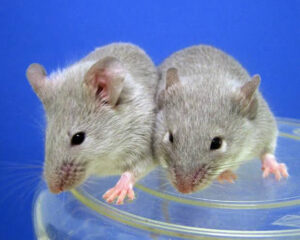Mouse Born From Two Male Parents

Scientists Successfully Raise a Mouse from Two Male Parents to Adulthood: A Groundbreaking Milestone in Reproductive Science
In a historic breakthrough in reproductive biology and genetics, scientists have successfully created and raised a mouse from two biological male parents to full adulthood. This scientific milestone, achieved by a team of researchers in Japan, marks a significant advancement in the field of genetic engineering and opens new doors for fertility research and same-sex reproduction.
How the Breakthrough Happened
The process in which skin cells taken from a male mouse. Using advanced genetic reprogramming techniques, the scientists converted these cells into pluripotent stem cells —cells capable of becoming any type of cell in the body. From these, they engineered functional egg cells by altering the male cells’ chromosomes to mimic the female genetic structure (XX), even though they originally came from a male (XY).
These lab-created egg cells were then fertilized with sperm from another male mouse, resulting in viable embryos. The Developing embryos Transfer into surrogate female mice, and some of these embryos successfully developed into live pups. Among them, one of the mice grew into a healthy, fully functioning adult.
Why This Matters
This study represents the first time in history that a mammal has been born from two male genetic parents and survived to adulthood. While similar experiments have been attempted before, this is the first instance where the offspring was not only born healthy but also matured normally.
Future Implications
Although the research is still in its early stages and not yet applicable to humans, it opens up extraordinary possibilities:
• Infertility Solutions: It may provide future options for individuals or couples who face infertility issues due to medical or genetic reasons.
• Same-Sex Reproduction: The findings offer hope that one day, same-sex couples may have biological children without the need for donor eggs or sperm.
• Genetic Research: It could further our understanding of how sex chromosomes and cellular reprogramming work in mammals.
Ethical and Scientific Considerations
Despite the excitement surrounding this achievement, it also raises ethical and scientific questions. Experts urge caution, stressing that while the science is promising, the implications for human application are complex and would require years of additional research, thorough ethical review, and strict regulation.
⸻
Conclusion
The successful creation and development of a mouse from two male parents represent a remarkable leap in reproductive science. Although it is not immediately translatable to human reproduction, this groundbreaking work paves the way for new frontiers in genetics, fertility treatments, and possibly the redefinition of parenthood in the future.
Reference: Cell Stem Cell ,